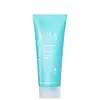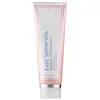What's inside
What's inside
 Key Ingredients
Key Ingredients

 Benefits
Benefits

 Concerns
Concerns

 Ingredients Side-by-side
Ingredients Side-by-side

Sulfur 3%
AntiseborrhoeicWater
Skin ConditioningGlycerin
HumectantBentonite
AbsorbentSodium Cocoyl Isethionate
CleansingPropanediol
SolventSodium Cocoyl Glycinate
Cleansing1,2-Hexanediol
Skin ConditioningMagnesium Aluminum Silicate
AbsorbentAcacia Senegal Gum
MaskingSea Water
HumectantSalix Alba Bark Extract
AstringentLactococcus Ferment Lysate
Skin ConditioningLactobacillus
Skin ConditioningLactobacillus Ferment
Skin ConditioningCamellia Oleifera Leaf Extract
AstringentBetula Alba Bark Extract
MaskingScrophularia Nodosa Extract
Skin ConditioningBetula Alba Juice
AstringentPinus Densiflora Leaf Extract
AntimicrobialAspalathus Linearis Leaf Extract
Skin ConditioningPanthenol
Skin ConditioningCurcuma Longa Root Extract
MaskingBeta Vulgaris Root Extract
Skin ConditioningAlpha-Glucan Oligosaccharide
CleansingPolymnia Sonchifolia Root Juice
Skin ConditioningInulin
Skin ConditioningLactic Acid
BufferingLeuconostoc/Radish Root Ferment Filtrate
AntimicrobialAnanas Sativus Fruit Extract
Skin ConditioningCitrus Aurantium Dulcis Fruit Extract
MaskingCitrus Limon Peel Extract
EmollientEugenia Caryophyllus Flower Extract
AstringentPyrus Communis Fruit Extract
Skin ConditioningPyrus Malus Fruit Extract
Skin ConditioningSalvia Officinalis Leaf Extract
CleansingVanilla Planifolia Fruit Extract
Skin ConditioningSodium Chloride
MaskingSorbitan Oleate Decylglucoside Crosspolymer
CleansingMaltodextrin
AbsorbentButylene Glycol
HumectantSodium Benzoate
MaskingDipropylene Glycol
HumectantHydroxypropyl Cyclodextrin
MaskingPotassium Sorbate
PreservativeCitric Acid
BufferingQuartz
AbrasiveChlorophyllin-Copper Complex
AntioxidantSodium Cocoate
CleansingCoconut Acid
CleansingSodium Isethionate
CleansingCI 77891
Cosmetic ColorantSulfur 3%, Water, Glycerin, Bentonite, Sodium Cocoyl Isethionate, Propanediol, Sodium Cocoyl Glycinate, 1,2-Hexanediol, Magnesium Aluminum Silicate, Acacia Senegal Gum, Sea Water, Salix Alba Bark Extract, Lactococcus Ferment Lysate, Lactobacillus, Lactobacillus Ferment, Camellia Oleifera Leaf Extract, Betula Alba Bark Extract, Scrophularia Nodosa Extract, Betula Alba Juice, Pinus Densiflora Leaf Extract, Aspalathus Linearis Leaf Extract, Panthenol, Curcuma Longa Root Extract, Beta Vulgaris Root Extract, Alpha-Glucan Oligosaccharide, Polymnia Sonchifolia Root Juice, Inulin, Lactic Acid, Leuconostoc/Radish Root Ferment Filtrate, Ananas Sativus Fruit Extract, Citrus Aurantium Dulcis Fruit Extract, Citrus Limon Peel Extract, Eugenia Caryophyllus Flower Extract, Pyrus Communis Fruit Extract, Pyrus Malus Fruit Extract, Salvia Officinalis Leaf Extract, Vanilla Planifolia Fruit Extract, Sodium Chloride, Sorbitan Oleate Decylglucoside Crosspolymer, Maltodextrin, Butylene Glycol, Sodium Benzoate, Dipropylene Glycol, Hydroxypropyl Cyclodextrin, Potassium Sorbate, Citric Acid, Quartz, Chlorophyllin-Copper Complex, Sodium Cocoate, Coconut Acid, Sodium Isethionate, CI 77891
Sulfur 3%
AntiseborrhoeicWater
Skin ConditioningSodium Cocoyl Isethionate
CleansingCoco-Glucoside
CleansingAcrylates Copolymer
Cetearyl Alcohol
EmollientGlycereth-18 Ethylhexanoate
Skin ConditioningGlycereth-18
HumectantStearyl Alcohol
EmollientHoney Extract
HumectantOryza Sativa Bran Extract
Skin ConditioningAvena Sativa Kernel Extract
AbrasiveOligopeptide-10
AntimicrobialBoswellia Serrata Extract
Skin ConditioningBehenyl Alcohol
EmollientGlycerin
HumectantXanthan Gum
EmulsifyingCaprylyl Glycol
EmollientHexylene Glycol
EmulsifyingButylene Glycol
HumectantPhenoxyethanol
PreservativeParfum
MaskingCitric Acid
BufferingSodium Hydroxide
BufferingEthylhexylglycerin
Skin ConditioningDisodium EDTA
Disodium Carboxyethyl Siliconate
Skin ConditioningLinalool
PerfumingPotassium Sorbate
PreservativeSodium Benzoate
MaskingCI 77891
Cosmetic ColorantCI 77491
Cosmetic ColorantSulfur 3%, Water, Sodium Cocoyl Isethionate, Coco-Glucoside, Acrylates Copolymer, Cetearyl Alcohol, Glycereth-18 Ethylhexanoate, Glycereth-18, Stearyl Alcohol, Honey Extract, Oryza Sativa Bran Extract, Avena Sativa Kernel Extract, Oligopeptide-10, Boswellia Serrata Extract, Behenyl Alcohol, Glycerin, Xanthan Gum, Caprylyl Glycol, Hexylene Glycol, Butylene Glycol, Phenoxyethanol, Parfum, Citric Acid, Sodium Hydroxide, Ethylhexylglycerin, Disodium EDTA, Disodium Carboxyethyl Siliconate, Linalool, Potassium Sorbate, Sodium Benzoate, CI 77891, CI 77491
 Reviews
Reviews

Ingredients Explained
These ingredients are found in both products.
Ingredients higher up in an ingredient list are typically present in a larger amount.
Butylene Glycol (or BG) is used within cosmetic products for a few different reasons:
Overall, Butylene Glycol is a safe and well-rounded ingredient that works well with other ingredients.
Though this ingredient works well with most skin types, some people with sensitive skin may experience a reaction such as allergic rashes, closed comedones, or itchiness.
Learn more about Butylene GlycolCi 77891 is a white pigment from Titanium dioxide. It is naturally found in minerals such as rutile and ilmenite.
It's main function is to add a white color to cosmetics. It can also be mixed with other colors to create different shades.
Ci 77891 is commonly found in sunscreens due to its ability to block UV rays.
Learn more about CI 77891Citric Acid is an alpha hydroxy acid (AHA) naturally found in citrus fruits like oranges, lemons, and limes.
Like other AHAs, citric acid can exfoliate skin by breaking down the bonds that hold dead skin cells together. This helps reveal smoother and brighter skin underneath.
However, this exfoliating effect only happens at high concentrations (20%) which can be hard to find in cosmetic products.
Due to this, citric acid is usually included in small amounts as a pH adjuster. This helps keep products slightly more acidic and compatible with skin's natural pH.
In skincare formulas, citric acid can:
While it can provide some skin benefits, research shows lactic acid and glycolic acid are generally more effective and less irritating exfoliants.
Most citric acid used in skincare today is made by fermenting sugars (usually from molasses). This synthetic version is identical to the natural citrus form but easier to stabilize and use in formulations.
Read more about some other popular AHA's here:
Learn more about Citric AcidGlycerin is already naturally found in your skin. It helps moisturize and protect your skin.
A study from 2016 found glycerin to be more effective as a humectant than AHAs and hyaluronic acid.
As a humectant, it helps the skin stay hydrated by pulling moisture to your skin. The low molecular weight of glycerin allows it to pull moisture into the deeper layers of your skin.
Hydrated skin improves your skin barrier; Your skin barrier helps protect against irritants and bacteria.
Glycerin has also been found to have antimicrobial and antiviral properties. Due to these properties, glycerin is often used in wound and burn treatments.
In cosmetics, glycerin is usually derived from plants such as soybean or palm. However, it can also be sourced from animals, such as tallow or animal fat.
This ingredient is organic, colorless, odorless, and non-toxic.
Glycerin is the name for this ingredient in American English. British English uses Glycerol/Glycerine.
Learn more about GlycerinPotassium Sorbate is a preservative used to prevent yeast and mold in products. It is commonly found in both cosmetic and food products.
This ingredient comes from potassium salt derived from sorbic acid. Sorbic acid is a natural antibiotic and effective against fungus.
Both potassium sorbate and sorbic acid can be found in baked goods, cheeses, dried meats, dried fruit, ice cream, pickles, wine, yogurt, and more.
You'll often find this ingredient used with other preservatives.
Learn more about Potassium SorbateSodium Benzoate is a preservative. It's used in both cosmetic and food products to inhibit the growth of mold and bacteria. It is typically produced synthetically.
Both the US FDA and EU Health Committee have approved the use of sodium benzoate. In the US, levels of 0.1% (of the total product) are allowed.
Sodium benzoate works as a preservative by inhibiting the growth of bacteria inside of cells. It prevents the cell from fermenting a type of sugar using an enzyme called phosphofructokinase.
It is the salt of benzoic acid. Foods containing sodium benzoate include soda, salad dressings, condiments, fruit juices, wines, and snack foods.
Studies for using ascorbic acid and sodium benzoate in cosmetics are lacking, especially in skincare routines with multiple steps.
We always recommend speaking with a professional, such as a dermatologist, if you have any concerns.
Learn more about Sodium BenzoateSodium cocoyl isethionate is a natural ingredient from coconut oil. It is an ultra gentle cleanser that gives a nice foam without drying the skin or impacting the skin barrier.
The amount of foam created depends on the amount of sodium cocoyl isethionate used in the product.
This ingredient also helps improve the spreadability of a product.
Learn more about Sodium Cocoyl IsethionateSulfur is a commonly occurring element on Earth (and our universe!). In cosmetics, it helps kill bacteria, reduces sebum, and provides exfoliation. This makes it an effective ingredient to reduce breakouts and fight acne.
As a ketayolytic agent, it breaks down the top layer of skin. This is a form of exfoliation and may help decrease acne and hyperpigmentation.
Studies show sulfur has antibacterial and antifungal properties. Sulfur can be drying if used excessively or at higher concentrations. We recommend speaking with a medical professional if you have any concerns.
Ancient Greece, India, China, and Egypt have used sulfur in both traditional medicines and for household use.
Learn more about SulfurWater. It's the most common cosmetic ingredient of all. You'll usually see it at the top of ingredient lists, meaning that it makes up the largest part of the product.
So why is it so popular? Water most often acts as a solvent - this means that it helps dissolve other ingredients into the formulation.
You'll also recognize water as that liquid we all need to stay alive. If you see this, drink a glass of water. Stay hydrated!
Learn more about Water